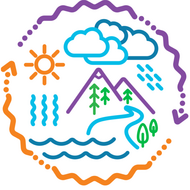PEI SOLS 4th Grade Natural Hazards: Erosion
(View Complete Item Description)What we see on Earth’s surface is a complex and dynamic set of interconnected systems that include the geosphere, hydrosphere, atmosphere, cryosphere and biosphere. Earth’s processes are the result of energy flow and matter cycling within and among these systems. Understanding Earth’s systems is important for many decisions made in communities today such as where to build a road, where a salmon can successfully build a redd to lay eggs, and how to ensure air quality. Erosion involves all five spheres giving students an excellent example of the interconnectedness of these large systems. Students may begin the storyline by hearing a story about the relationship between the land and plants from an Indigenous perspective, a local tribe elder or expert if possible. This perspective can be woven throughout the storyline while students explore different types of erosion: wind, water and ice in sand and soil. For real life experiences, students visit their schoolyard or nearby area to find examples of erosion. They may find examples from very small to larger examples of places where soil has eroded. They may find places where human foot traffic has made pathways through a previously planted area.
Material Type: Unit of Study




















